 |
| Not the school C42, but one Katie has a share in. |
Katie has a very calm, confident but unassuming manner and I was immediately at my ease, and almost from the off, "You have control".....and I was taxiing to runway 06. This, as you will know, is the first mental conversion required of a flexwing pilot, as the controls are reversed. Steering a trike is like steering a children's tricycle; it is direct. But a 3 axis tricycle nose wheel control is connected to the rudder, so you push right to go right. So I did it rather too slowly at first and I think Katie thought we'd never get to the runway, so took back control for a short while, then gave it back for the last 25 metres. On the taxi back I was much more confident. The trick to getting it straight is to put yourself in the centre and steer yourself rather than the nose of the aircraft, and that came naturally to me; and actually, push right, go right makes real sense. Get the throttle settings right, and I will crack it.
Once airborne the first thing I realised very quickly was how light the controls are compared to flexwing, where you are correcting all the time, and dealing with often quite strong upper body movements; so much so, that Lizzie's instructor did wonder how easily she'd manage it (though, in fact, she was a natural). Katie told me to hold the stick with thumb and fingers either side of it, rather than wrapping fingers round it, as I did at first. Your hand sort of brackets the stick, a bit like a tuning fork with the stick between the prongs. This will mean greater sensitivity, but presumably is also to stop you nervously flying nose high and stalling.
We did Ex4....controls familiarisation. I learnt about setting flaps...about the ballooning effect and how to counter it, bringing the nose down to the right attitude.The reverse, taking off flaps, was trickier because I did not realise quite how snappy the spring would be, so let the handle forward, releasing the loads, far too dramatically. But with a few tries that improved. Of course we don't have flaps on trikes, so this was all new.
I learnt a lot about setting the trim, about the nose attitude of the aeroplane, and spent lots of time looking at the airspeed indicator and the revs. The C42 trim settings are done with switches on the top of the stick, which incidentally is centrally mounted and shared. Stick forward -front button, stick back -back button. All very logical really. Trim is almost inconsequential on the Quantum, so it is some time since I thought about it, but setting it up on the C42 was just the same as doing it on the GT450. Lovely being able to do it with tiny switch inputs on the stick rather than a great big knob on the side of the A-frame.
All climbing and descending was much as you'd expect in any aircraft, PAT and APT, etc. I was pleased to be able to go straight into that without embarrassing myself.
One thing that did surprise me was that almost nothing was done with the rudder* (see update below for clarification), and not just because I was being introduced to it slowly, either. All turning was done with the stick, using the aircraft's differential ailerons. This made the operation very much simpler than flying the Tiger Moth, for instance. Katie demonstrated the way the nose can drop down to the right on a turn and how to counter it- but it didn't seem a great problem.
I loved the challenge and focus of the hour, which passed very quickly; And despite it rushing past, I felt that we covered an awful lot. I really enjoyed being a student, but like being a post-grad again I had the advantage of knowing all the basics already, so that progress was fairly rapid, leaving me feeling confident about doing a conversion, which really does have to be the next thing. Of course, lots of that confidence has to be down to Katie, whose delivery is very clear and reassuring. I did ask her how long she thought conversion would take, and she was professionally reticent to give a number, but my impression is that it is probably a very affordable 10-12 hours.
(This was a lesson, not a joy ride, so I didn't take my camera up, and the aeroplane was back in the air after my lesson before I thought to take any pictures, so I took pics of the one Katie has a share in)
..........................................
*Update
Katie has now read what I put and has got back to me with some feedback, which she has said I may quote:
"I can see that I didn't emphasise the use of rudder clearly,
it is important in the C-42 but use of it is much more subtle than in the AX
series where you need a bootful of rudder just to get the thing to turn.
However, most flex wing pilots soon get used to the rudder. The two things that
seem to be the biggest issues are learning to fly by power and attitude rather
than feeling airspeed directly and being too heavy handed on the controls;
flying with a light touch is vital, especially when landing a 3 axis as you
will be able to feel the aircraft slowing down during the hold off and feed in
more and more back pressure. A vice-like grip makes this almost impossible, but
I don't think you will have a problem with that.
There is so much to learn with 3 axis, I think it's more of an art than flex wing flying, converting is just the beginning...."
There is so much to learn with 3 axis, I think it's more of an art than flex wing flying, converting is just the beginning...."









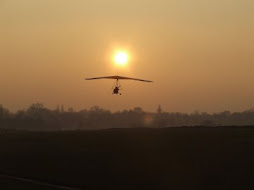

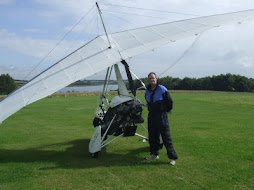









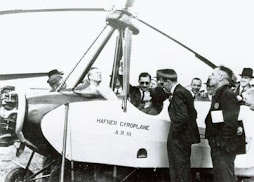

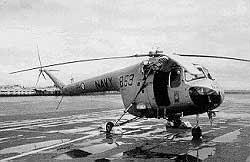
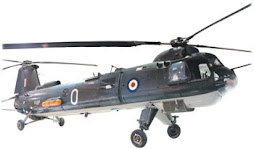









No comments:
Post a Comment